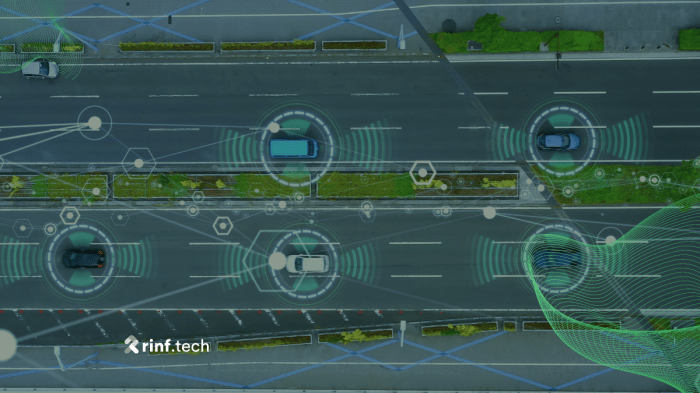The automotive landscape is undergoing a dramatic transformation, driven by advancements in driver assistance technology. 2025 marks a significant milestone, showcasing how these technologies are not just enhancing the driving experience but fundamentally redefining automotive safety. From preventing accidents to mitigating their severity, driver assistance systems (ADAS) are becoming increasingly sophisticated and prevalent, promising a future with significantly fewer road casualties.

Source: gossipsdiary.com
The Evolution of Driver Assistance Systems
The journey from basic cruise control to the advanced driver-assistance systems (ADAS) of today has been remarkable. Early systems focused on single functionalities, like anti-lock brakes (ABS) and electronic stability control (ESC). These were crucial steps, significantly reducing accident severity. However, the modern approach integrates multiple systems into a cohesive network, creating a more holistic and proactive safety net.
Key ADAS Features Transforming Safety:
- Adaptive Cruise Control (ACC): ACC goes beyond traditional cruise control by automatically adjusting speed to maintain a safe following distance from the vehicle ahead. This is crucial in preventing rear-end collisions, a common cause of accidents.
- Automatic Emergency Braking (AEB): AEB systems can detect imminent collisions and automatically apply the brakes, potentially avoiding or mitigating the impact. These systems often incorporate pedestrian and cyclist detection, further enhancing safety.
- Lane Departure Warning (LDW) and Lane Keeping Assist (LKA): LDW alerts drivers when they unintentionally drift out of their lane, while LKA actively steers the vehicle back into the lane, preventing lane departures and potential accidents.
- Blind Spot Monitoring (BSM): BSM systems use sensors to detect vehicles in the driver’s blind spots, alerting them to potential hazards during lane changes. This significantly reduces the risk of side-impact collisions.
- Forward Collision Warning (FCW): FCW systems provide visual and audible alerts when a potential collision is detected, giving the driver time to react and avoid an accident.
- Driver Monitoring Systems: These systems use cameras and sensors to track the driver’s alertness and attentiveness. If drowsiness or distraction is detected, the system provides warnings or even takes corrective action, preventing accidents caused by driver fatigue or inattention.
- Parking Assistance Systems: From simple parking sensors to fully automated parking systems, these technologies simplify parking maneuvers and reduce the risk of low-speed collisions.
The Road to Autonomous Driving: Level 2 and Beyond
The development of ADAS is paving the way for autonomous driving. While fully autonomous vehicles (Level 5 autonomy) are still some years away, we’re already seeing the widespread adoption of Level 2 systems. Level 2 combines ACC and LKA, allowing for hands-off driving in certain situations, but requiring the driver to remain vigilant and ready to take control.
The progression towards higher levels of autonomy will further enhance safety by reducing human error, a major contributing factor in most accidents. However, ethical considerations and regulatory frameworks need to be carefully addressed to ensure the safe and responsible deployment of these technologies.
The Impact on Insurance and Legislation
The proliferation of ADAS is significantly impacting the insurance industry. Insurance premiums are increasingly reflecting the safety features equipped in vehicles. Cars with advanced safety systems often receive discounts, incentivizing manufacturers and consumers to adopt these life-saving technologies. Furthermore, legislation is evolving to mandate certain ADAS features in new vehicles, further driving their adoption and improving overall road safety.
Challenges and Future Directions
Despite the significant advancements, challenges remain. The effectiveness of ADAS can be compromised by adverse weather conditions, such as heavy rain or snow. Furthermore, the cost of implementing these systems can be a barrier to entry for some manufacturers and consumers. Ensuring equitable access to these safety technologies is crucial.

Source: rinf.tech
Future developments will likely focus on improving the robustness and reliability of ADAS in challenging environments, expanding their functionalities to encompass a wider range of scenarios, and integrating them seamlessly with other vehicle systems. The development of advanced sensor technologies, such as LiDAR and high-resolution cameras, will play a vital role in this evolution.
Future Trends in Driver Assistance Technology:
- Improved sensor fusion: Combining data from multiple sensors (cameras, radar, lidar) to create a more comprehensive and accurate understanding of the surrounding environment.
- Artificial intelligence (AI) and machine learning (ML): Leveraging AI and ML to improve the decision-making capabilities of ADAS, enabling them to handle more complex driving scenarios.
- Vehicle-to-everything (V2X) communication: Enabling vehicles to communicate with each other and with infrastructure (traffic lights, road signs) to enhance situational awareness and improve safety.
- Over-the-air (OTA) updates: Allowing ADAS systems to be updated remotely, ensuring that they remain up-to-date with the latest safety features and improvements.
Frequently Asked Questions (FAQ)
- Q: Are driver assistance systems completely safe? A: No, driver assistance systems are not foolproof. They are designed to assist drivers, not replace them. Drivers should always remain attentive and ready to take control.
- Q: How much do driver assistance systems cost? A: The cost varies greatly depending on the specific features and the vehicle. Some basic systems are standard, while more advanced features may be optional extras.
- Q: How do I know if my car has driver assistance systems? A: Check your owner’s manual or consult your car’s information display. Many systems have indicator lights or displays to show when they are active.
- Q: Are driver assistance systems mandatory? A: The legal requirements for ADAS vary by region and are constantly evolving. Check your local regulations for specific mandates.
- Q: Will driver assistance systems make driving jobs obsolete? A: While automation is increasing, the complete replacement of human drivers is unlikely in the near future. ADAS will likely augment human capabilities rather than replace them entirely.
References
- National Highway Traffic Safety Administration (NHTSA)
- Insurance Institute for Highway Safety (IIHS)
- European Parliament
Call to Action
Stay informed about the latest advancements in driver assistance technology. Research the safety features available in your next vehicle and prioritize those that best meet your needs and enhance your safety on the road. The future of automotive safety is here, and it’s driven by innovation.
FAQ Insights
What are the potential downsides of relying on driver-assistance technology?
Over-reliance can lead to complacency and reduced driver attentiveness. Malfunctions or limitations in the technology can also create unexpected situations. Regular maintenance and understanding the system’s capabilities are crucial.
How will insurance premiums be affected by the adoption of these technologies?
Insurance companies are likely to offer lower premiums for vehicles equipped with advanced safety features, reflecting the reduced risk of accidents.
Will these technologies make driving jobs obsolete?
While some roles might evolve, the complete replacement of human drivers is unlikely in the near future. These technologies are designed to assist, not replace, human drivers.
What ethical considerations arise with the use of these technologies?
Questions surrounding data privacy, algorithmic bias, and liability in the event of accidents involving these systems are key ethical considerations that require careful attention.
